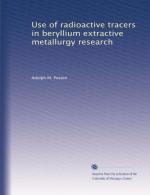|
This section contains 482 words (approx. 2 pages at 300 words per page) |

|
Until the early years of the twentieth century, there was no way to observe the functions of a living organism without surgery. Then came the invention of the x-ray machine, the first device that allowed doctors to actually see inside a living creature. As the technology improved, x-ray machines were used to follow the processes of digestion and aspiration; however, this observation required that a large number of x-ray photographs be taken, exposing the patient to a dangerous amount of radiation.
Today, the best way to track the inner workings of life and machinery is through the use of radioactive trace elements. A trace element is usually a radioactive isotope of some common element, such as iodine, phosphorus, or gold. This isotope is introduced into a living system, where it flows along the bloodstream, following the path of chemical processes therein. Because of the radioactive nature...
|
This section contains 482 words (approx. 2 pages at 300 words per page) |

|


